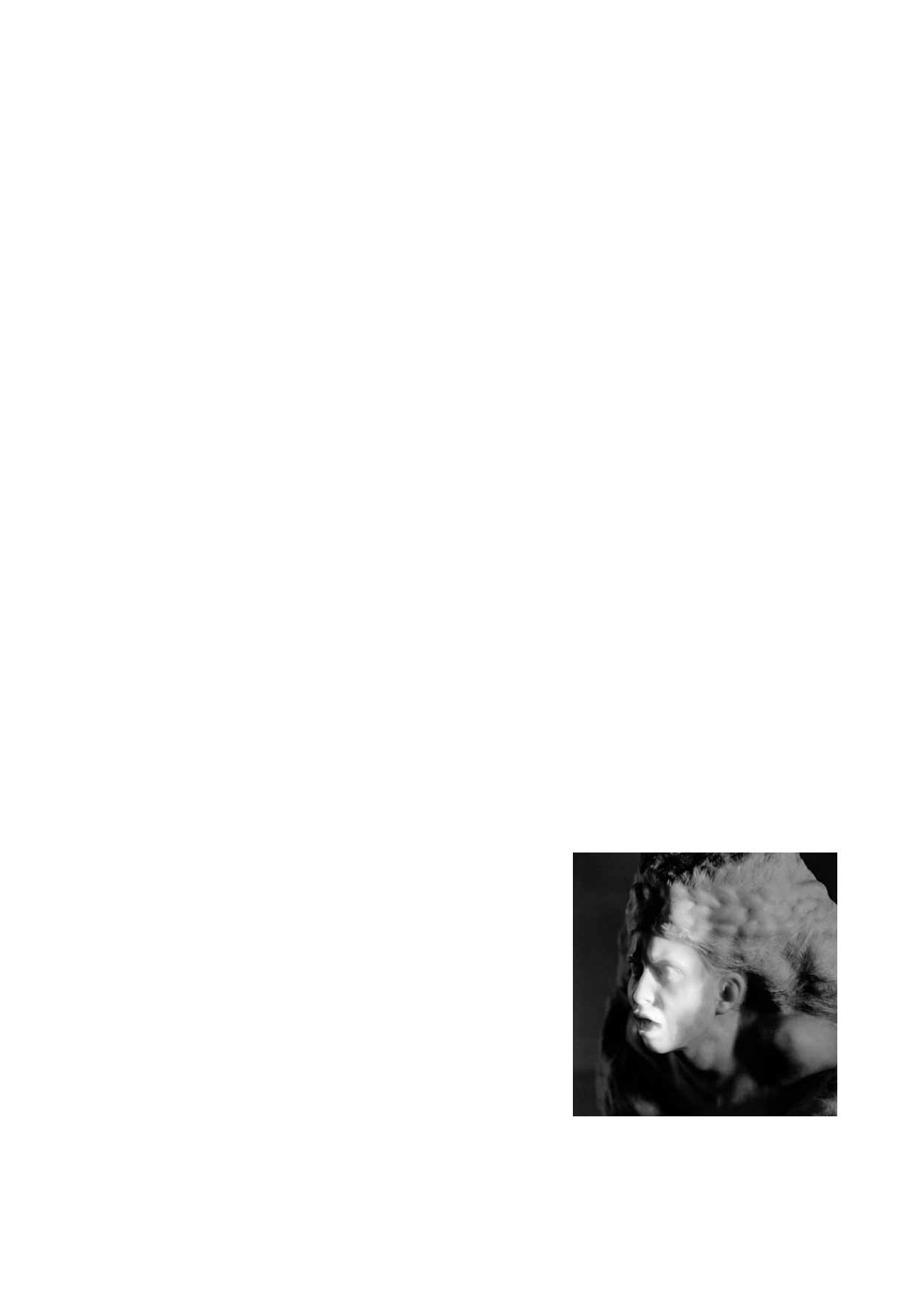
3
WL
–What in the media is designated as art is ultimately determined by
the opinion of gallery owners, art historians and art theorists. They make
their decision based on profound specialist knowledge of art history and
their visual refinement, both of which go far beyond the knowledge and
comprehension of occasional viewers of art. In essence, art is what is
considered to be art. Art is also subject to the acceptance of the majority
of viewers of art and the spirit of the times. In this sense, art can also be
defined as what brings a museum large numbers of visitors. Who today is
still interested in Cesar’s “Thumb”?
But there is a good filter for ascertaining what ‘art’ is for me. That is the
time filter. I have viewed many thousands of photographs during my life-
time. However, when I’m away frommy bookcase and want to remember
certain ones, only about fifty photos cross my mind. Which ones are
these? It is an interesting exercise in self-awareness to determine which
photographs remain in your visual memory. I would define art as
the pic-
tures that – in a positive sense – you don’t forget.
With this simple formula
you can relatively easily distinguish, in your own mind, art photography
from holiday photos. You only need to look at a relatively large number of
photos, and after two weeks see which ones you still remember. These
are then ‘art’ in the sense that art is what evokes lasting emotions or
essential thought-provoking impulses.
NL – If we look at your photo series
Home of the Gods
and the sculpture
photographs in the collection PhotoVaria, what seems to fascinate you
in the broadest sense is the sculptural aspect. To what extent can parts
of your work be viewed as the quest for sculpture, or to say it in a diffe-
rent way: Is your interest focused less on sculpture and rather more on
the content which sculpture can convey?
WL
– The kind of sculpture I’m primarily concerned with is the figurative
architecture of noble sentiment. Its sole purpose is to represent the spirit
intrinsic to it and as such to have a lasting impact on us. This sculpture,
for example, is represented by the work of Rodin, Despiau and several
other sculptors such as Bourdelle and Lehmbruck, among the “modern”
sculptors also by Moore, Chillida and Caro. However, I don’t see any fun-
damental difference between the content a sculpture can convey and, for
example, the content of a drawing or an oil painting. Merely the fact that
the sculpture makes demands on space in contrast to a drawing, painting
or a photograph and that it frequently does this in quite prominent loca-
tions gives it a higher degree of presence than other art forms. Although
sculpture conveys to me a highest degree of three-dimensional presence,
it fails to give me, in the same measure, a slightly suspended flow of its
artistic content into the spaces of my imagination. It shows me limits
which are mainly due to sculpture’s occasional lack of colour and move-
ment. Using the means of photography, I therefore sometimes attempt to
convey to the viewer an illusion of movement. I achieve this by moving
my camera at the time I take the picture. This creates a “movement blur”,
quite as if the object itself had moved. Occasionally I also use the possibi-
lity to compositionally combine a sculpture and its surroundings and the
light falling on it so that a new pictorial idea emanating from the compo-
sition is recognisable (5).
In a curious way, photography and sculpture are forms which are related
to each other. One is the form and the other is its image. The image
always remains a child of its form. Through the photographic technique
5 -Win Labuda,
Sculpture Photo 2 after
A. Rodin “The Storm”


